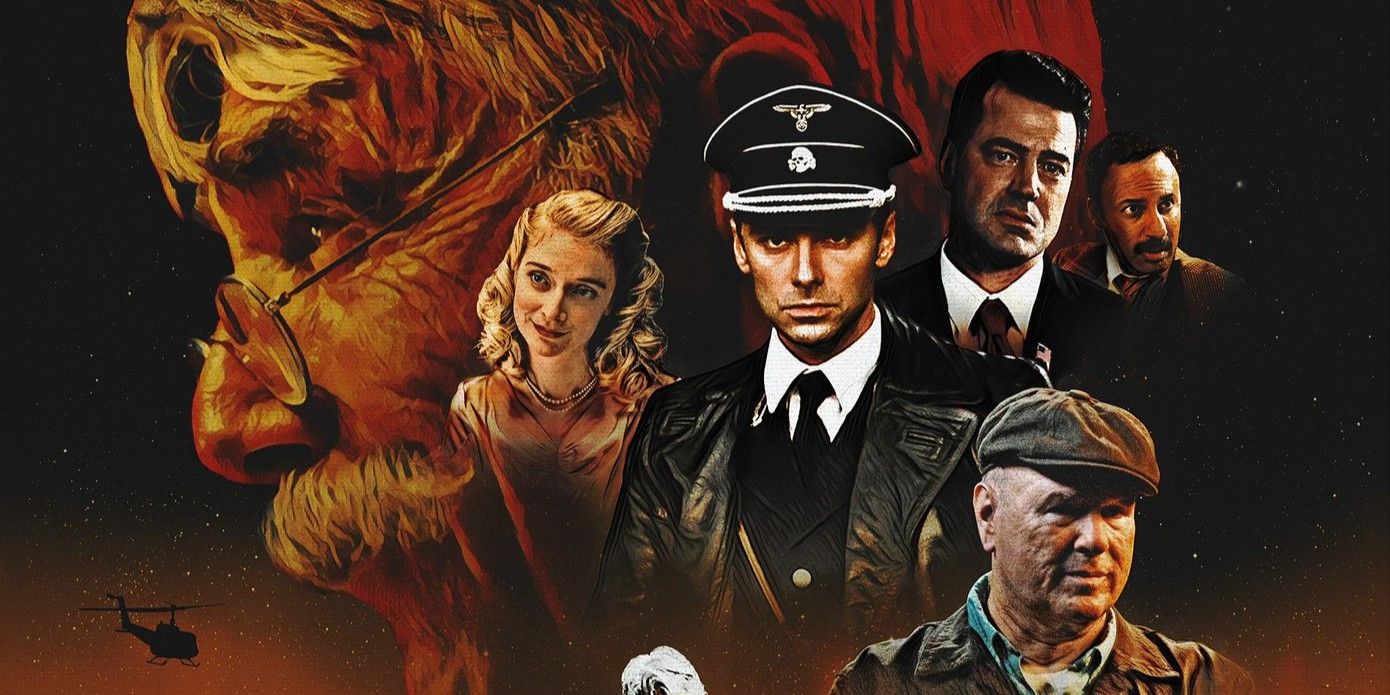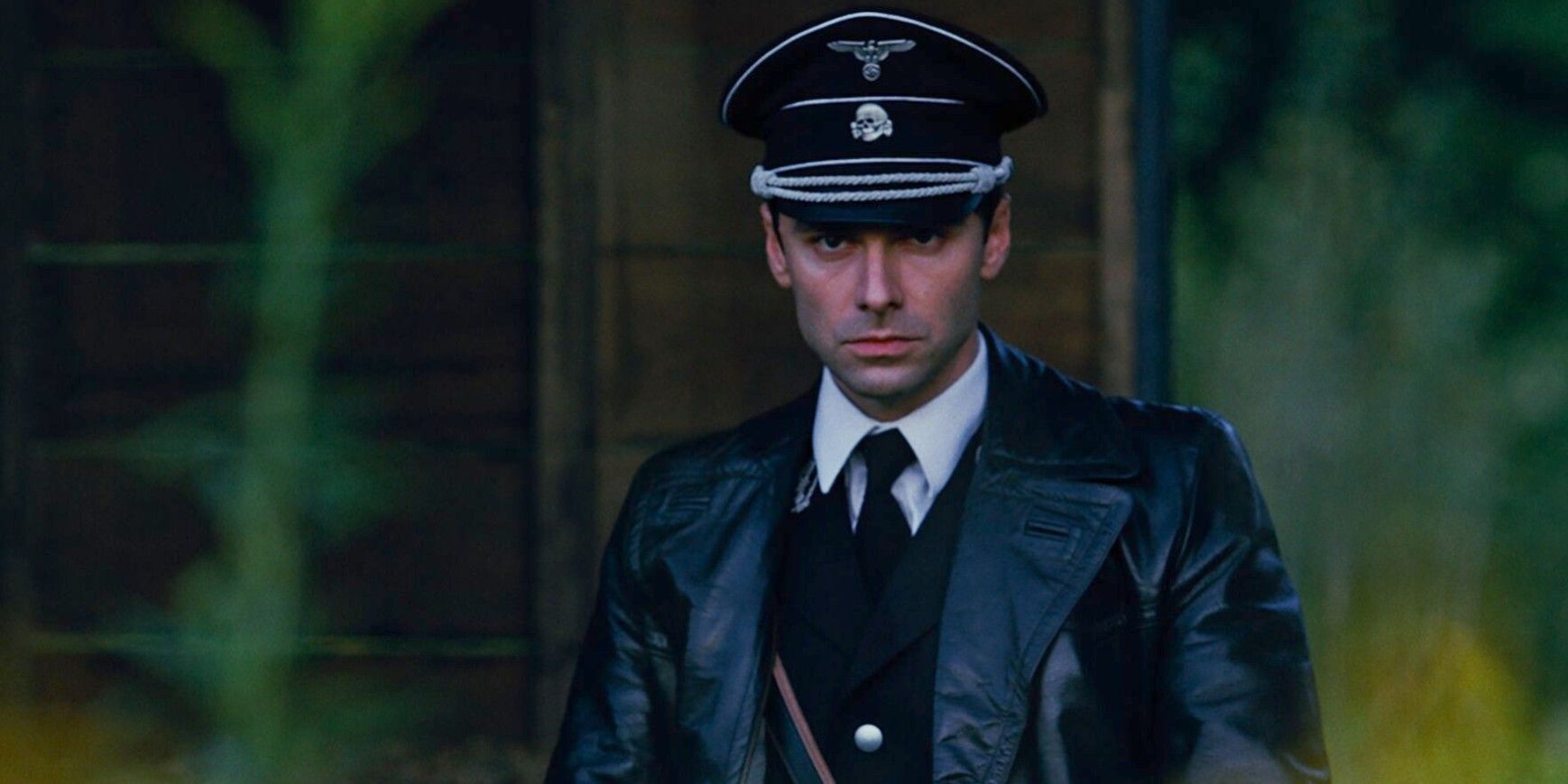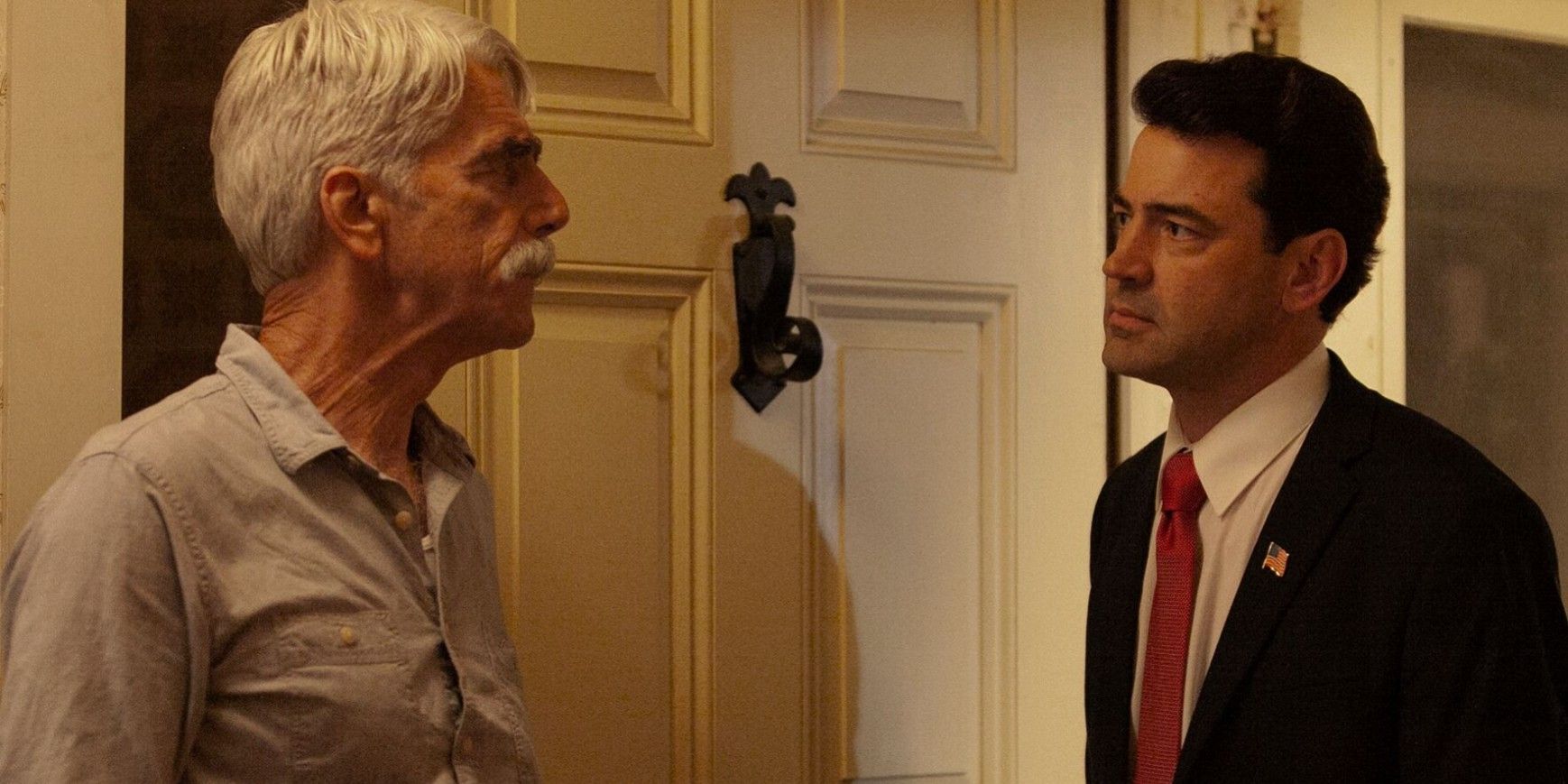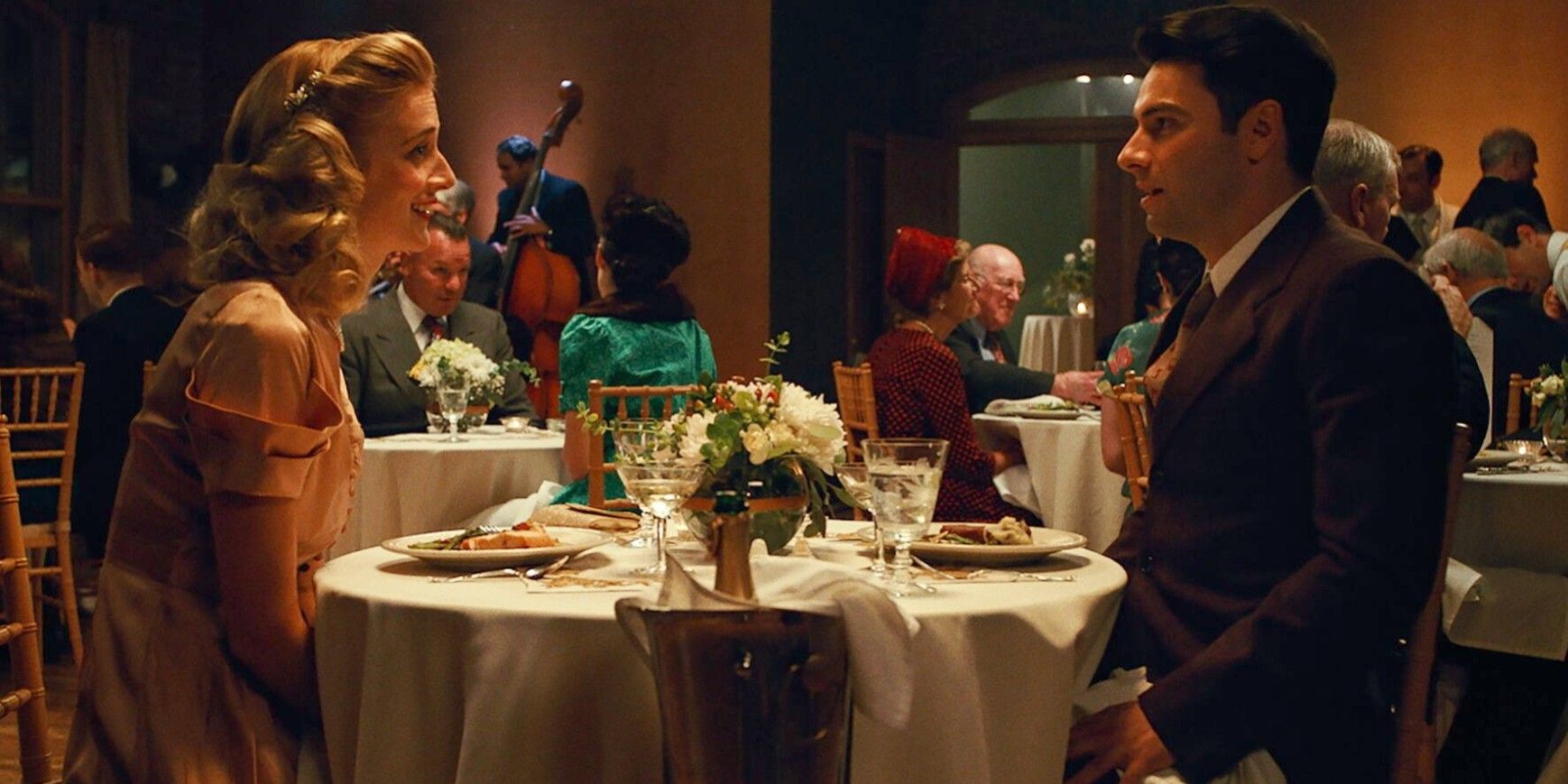The Man Who Killed Hitler and Then the Bigfoot spins a wobbly and idiosyncratic American myth held together by Elliott's quietly moving performance.
When a film calls itself The Man Who Killed Hitler and Then the Bigfoot, one expects something less than conventional. That's certainly the case with the actual movie, which marks the feature debut for writer-director Robert D. Krzykowski, and features a creative team that includes celebrated indie filmmaker John Sayles (Eight Men Out, Lone Star) as a producer and iconic VFX artist Douglas Trumbull (Close Encounters of the Third Kind, Blade Runner). Top it all off with a lead performance by the embodiment of grizzled manhood, Sam Elliott, and you have a film that lives up to the strangeness of its title, in more ways good than bad. The Man Who Killed Hitler and Then the Bigfoot spins a wobbly and idiosyncratic American myth held together by Elliott's quietly moving performance.
Elliott stars in The Man Who Killed Hitler and Then the Bigfoot as Calvin Barr, a U.S. soldier who secretly, well, killed Adolf Hitler back when he fought as a younger man (Aidan Turner) in WWII. Calvin's lived a quiet live over the many decades since then in his hometown, where he occasionally spends time with his younger brother and barber, Ed (Larry Miller). However, even after all these years, Calvin is still troubled by the fact that he killed someone - even a person as terrible as Hitler - and it did little to nothing to stop their sickness from living on. He's also haunted by his memories of Maxine (Caitlin FitzGerald), a kindly schoolteacher he fell in love with before going off to war.
One night, Calvin is approached by a pair of representatives for the U.S. and Canada - dubbed "Flag Pin" (Ron Livingston) and "Maple Leaf" (Rizwan Manji) - with a most unexpected mission. It turns out Bigfoot is real and not only resides in the Canadian wilderness, but is also the original carrier of a deadly plague that could devastate the entire world, if it spreads. Since Calvin is one of the few people immune to the plague, the two agents want him to use his tracking and hunting skills (which have barely diminished with age) to find and slay the Bigfoot before it's too late. While he has no desire to return to a life of killing, Calvin eventually accepts that it's up to him to secretly save the world... again.
Like its title suggests, The Man Who Killed Hitler and Then the Bigfoot is a peculiar mashup of genres. At its heart, the film is a story about an old man reflecting on the sacrifices he made in his life to serve the greater good, and whether they really mattered in the end. It then weaves this narrative together with a pulpy WWII action-adventure - one that's tonally in the vein of a comic book adaptation like The Rocketeer or a throwback like Inglourious Basterds - and a sci-fi B-movie that looks and feels like a film Trumbull might've worked on back in the '70s and '80s. While it makes for a bit of a hodgepodge at times, this odd combination of ingredients works surprisingly well as a whole. Indeed, by blending these disparate components together, the movie is able to avoid becoming excessively morose and, at the same time, gives its genre trappings more substance than they might've had otherwise.
Krzykowski's film is equally messy, yet innovative, in terms of structure. The Man Who Killed Hitler and Then the Bigfoot spends far less time focusing on the scenes where young Calvin hunts Hitler and old Calvin hunts Bigfoot than many would expect going in. Instead, the majority of the movie transitions back and forth between Calvin's present-day life and his memories of the past. For the most part, though, the film moves around smoothly through time and successfully juxtaposes different events in Calvin's life for emotional effect. The editing gets a little shakier in the other portions of the movie, especially when Calvin's battle with Bigfoot gets underway and Krzykowski tries to skip through the ensuing scenes too quickly. Still, these sequences also feature some of the most striking visuals in the entire film, from the serene wilderness where Bigfoot resides to the massive wall of fire meant to contain him. Credit goes to DP Alex Vendler and Trumbull's VFX crew for making these moments feel like they've been plucked from a far more expensive genre movie.
Of course, none of this would really work without Elliott playing the movie's namesake. The actor may've only just gotten his first Oscar nomination ever for A Star is Born, but has made an entire career out of playing cowboys (both literally and in spirit), and it serve him well here. It's a pretty bizarre showcase for Elliot, obviously, but The Man Who Killed Hitler and Then the Bigfoot is elevated from an interesting, yet unwieldy, experiment in genre storytelling into an almost profound examination of heroism, thanks to the gravitas that Elliot brings to his role. Turner is also quite good in his appearances as the younger Calvin, and brings a sense of steely determination to the scenes where he's on his undercover mission. The Hobbit and Poldark actor likewise brings the right amount of aw-shucks charm to his romantic scenes with FitzGerald, and it's all the easier to believe he ages into Elliott over time for it.
The rest of the cast is perfectly sturdy, if underused, in their supporting roles. FitzGerald, in particular, has gotten to play much more fleshed out and developed parts on TV series like Masters of Sex than she does as Calvin's romantic interest in The Man Who Killed Hitler and Then the Bigfoot. All the same, she makes the most of her scenes here and helps to sell Calvin and Maxine's simple, but touching and ultimately tragic courtship. Something similar could be said for Miller in his own small role as Calvin's sibling, who cannot help but admire his brother for his larger-than-life deeds. Meanwhile, Livingston and Manji get to have fun playing things a little more tongue-in-cheek in their appearances as a pair of "nameless" American and Canadian agents, but never seem out of tone with the movie around them.
In the end, The Man Who Killed Hitler and Then the Bigfoot is as weird as it looks and sounds, but mostly in a positive sense. The film might've collapsed at the seams without Elliott (or someone of similar talent) as its anchor, and there are certainly times where it struggles to maintain its delicate juggling act. Fortunately, Elliott prevents the movie from going off the tracks entirely, and basically gets to star in his own off-beat superhero adventure as a reward. It's not going to be for everyone - in case the title wasn't a dead giveaway - but those are interested may want to give this (most unusual) mythical saga a look at some point.
TRAILER
The Man Who Killed Hitler and Then the Bigfoot is now playing in select theaters, on digital and home demand. It is 98 minutes long and is currently not rated.
Let us know what you thought of the film in the comments section!




